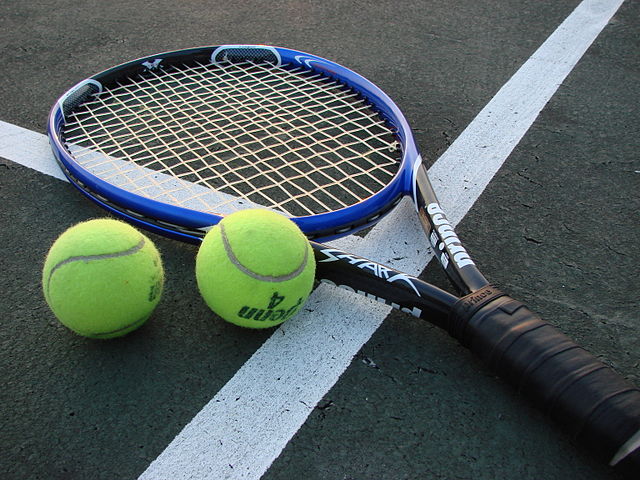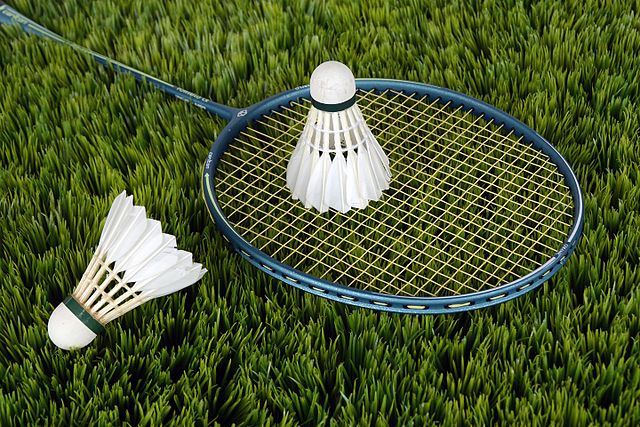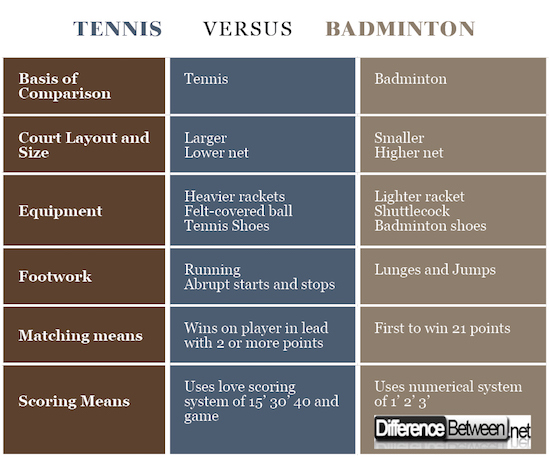Difference Between Tennis and Badminton
Badminton and tennis are both racket sports that are globally popular. The games can either be played individually or in sets of two. Those are however the only two similarities between the two sports. There are several differences can be identified between the two games from the equipment used, the field layout, scoring means and the match formats. The two games also have a set of different rules that differentiate them.

What is Tennis?
Tennis is part of the globally recognized racket sports, that is either played by two individual opponents or a set of two opponents. The game involves hitting a rubber ball with rackets from one side of the net to the other. The main aim is to hit the ball hard such that the opponent is not able to hit it back to make a good return.
Tennis can be traced back to the 12th century, when it was first played in Northern France. The game initially involved hitting the ball with one’s hand. During this time the sport was referred to as jeu de paume, which means game of the palm in English. Around 1860, the game was evolved into what we recognize as tennis today by Harry Gem and Augurio Perera. It is then that the use of rackets in the game was established. Ten years later the very first tennis club was built in Leamington Spa.
What is Badminton?
Badminton is another popular racket sport that involves the use of cord strung rackets and lightweight shuttlecocks. It is a racket sport played using cord strung rackets and shuttlecocks. The game can either be played by two parties or as set of two teams each team containing two individuals.
The game is played on a rectangle court separated into two by a net. The players stay on either side of the net and take turns in hitting the shuttlecock over the net to the opponent’s side. The shuttlecock can only be hit once after it passes over the net, when it falls down the match ends. The game is best played indoors, as the shuttlecock is very light in weight and is often swayed by the wind.
Badminton can be traced back to the 1850’s when it was first played in British India. The military officials stationed there, were believed to be the inventors of the game. In 1875, the Bath Badminton Club standardized the guiding rules of the game into what we recognize today.

Differences Between Tennis and Badminton
Court Layout and Size
Tennis courts measure 78 feet in length and 36 feet in width, on the other hand badminton courts measure 44 feet in length and 20 feet in width. Tennis courts are almost double the size of an average badminton court. The nets of both the games are also different. The tennis court’s net measures 36 in above the ground, while the badminton’s net measures 60 in above the ground.
Equipment
The equipment needed for each game varies. Tennis requires rackets that weigh between 250 to 360 grams. Badminton’s rackets are normally less than a hundred grams. Tennis uses a hard felt ball while badminton requires a shuttlecock. The shoes required for each of the games on the professional matches such as the Olympics also vary. Tennis has a list of approved tennis shoes while badminton has a list of preferred footwear.
Footwork
Footwork patterns between the two games are different; badminton patterns require more lunges and jumps. Tennis requires more running, abrupt starts and stops.
Matching Means
Tennis when played according to the rules, wins are based on the team or opponent with the best of 3 sets. Sets are won by the player or set of two team players that wins six games first with a margin of 2 or more games. To qualify as a winner, one must also win 4 points and lead in the game by 2 or more pointers. In badminton the first plater or first team of players to win twenty-one points wins the game.
Scoring Means
Points in the scoring system of tennis are love, 15’ 30’ 40’ and game. Tied games can be resolved by continuing the rounds until a player wins 2 consecutive points or one single round is played to establish a winner. Badminton on the other hand uses a numerical scoring system of love 1’ 2’ 3’. If the game ties at twenty points, the game continues until a winner with a 2-point margin is established. If the game ties at 29 points, another round is played to establish a winner.
Tennis vs. Badminton: Comparison Chart

Summary of Tennis vs. Badminton
Both are racket games recognized across the world.
Both the games are either played by two individuals or four individuals in sets of two.
Tennis uses up larger courts and the nets are 36 inches away from the ground. Badminton courts are smaller almost half the size of a tennis court and have nets that are further away from the ground.
In order to become the winner in a tennis match, you need to win 6 games first with a margin of 2 or more games. Badminton requires the winner to be the first to have 21 points.
- Difference Between S Corp and C Corp - September 9, 2018
- Difference Between Terrace and Balcony - September 9, 2018
- Difference Between Anabaptists and Evangelicals - August 31, 2018
Search DifferenceBetween.net :
 Email This Post
: If you like this article or our site. Please spread the word. Share it with your friends/family.
Email This Post
: If you like this article or our site. Please spread the word. Share it with your friends/family.
1 Comment
Leave a Response
References :
[0]Image credit: https://upload.wikimedia.org/wikipedia/commons/thumb/3/3e/Tennis_Racket_and_Balls.jpg/640px-Tennis_Racket_and_Balls.jpg
[1]Image credit: https://upload.wikimedia.org/wikipedia/commons/thumb/f/f9/Badminton-1428046.jpg/640px-Badminton-1428046.jpg
[2]Draper, N., & Marshall, H. (2014). Exercise Physiology: For Health and Sports Performance. Routledge.
[3]Sports, A. A. for H., Physical Education, and Recreation Division for Girls and Women’s, & Johnson, J. (1958). Selected tennis and badminton articles: from NSWA and NSGWS guides, Journal and health-physical education-recreation, and the Research Quarterly, 1936-1958. American Association for Health, Physical Education, and Recreation.
[4]Lees, A., Cabello, D., & Torres, G. (2008). Science and Racket Sports IV. Routledge.


It very good define